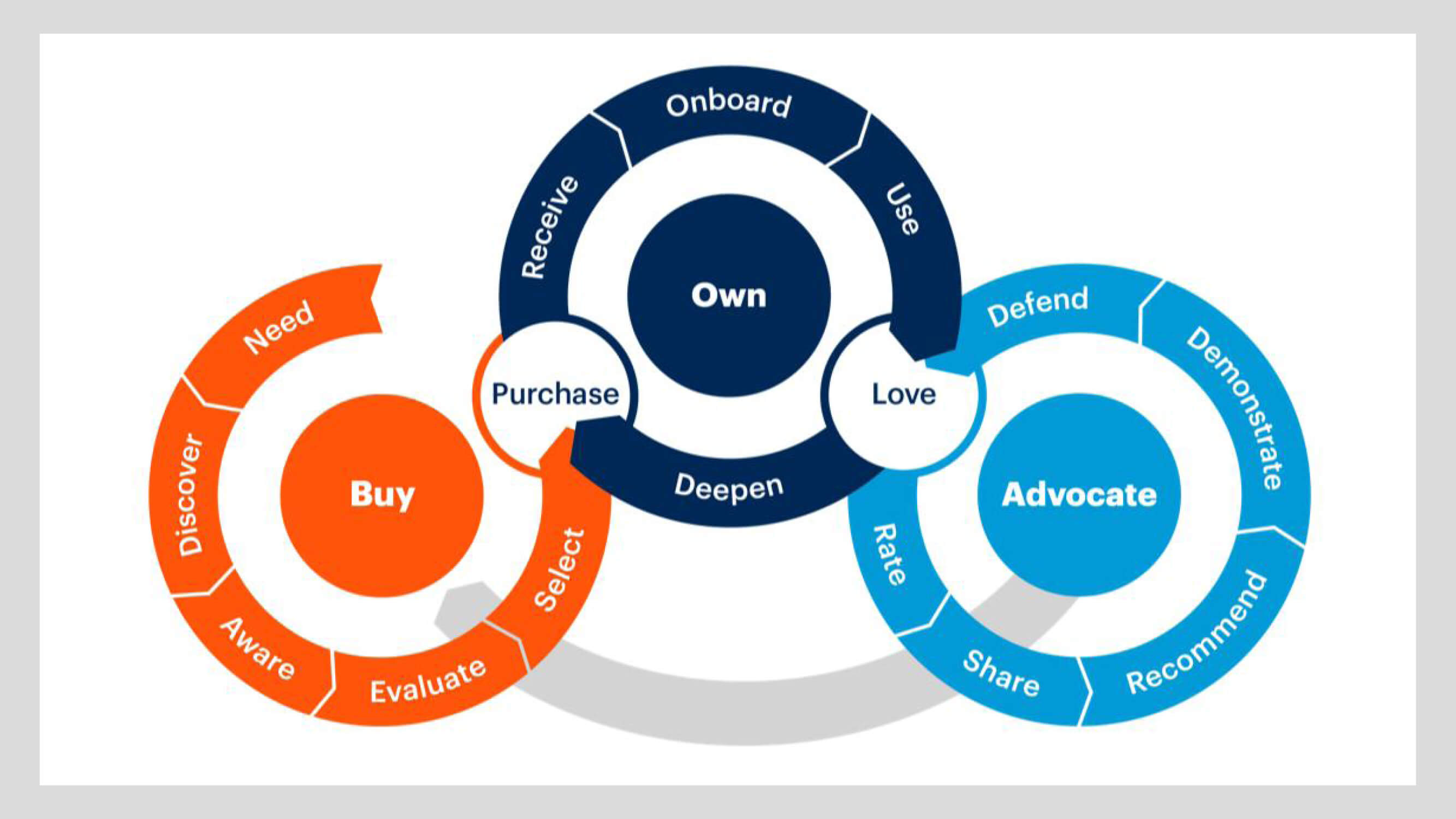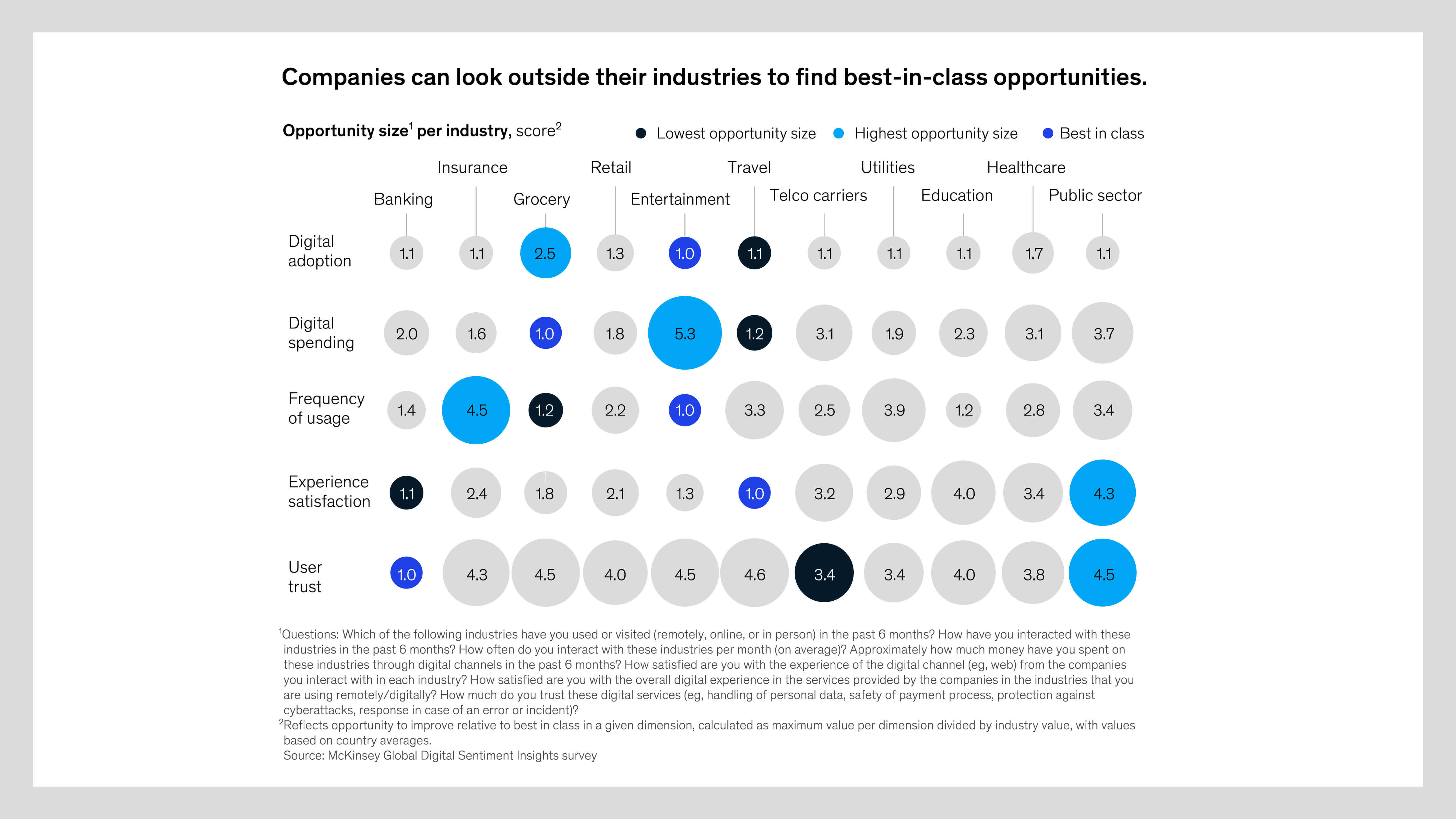10 April 2020
Marketing strategy8 June 2021
In the first of two discussions on the topic, Chris presses reset on what is customer experience and why it is so important
“81% of customer experience (CX) leaders report they will compete mostly or entirely on CX, but less than 50% have established the rationale for why CX drives business outcomes.” (Gartner 2018)
I’ve always been a customer experience person, even if I didn’t realise it. This goes back to my first job at age 15 working at my local grocery store in western New York state. For some reason, I didn’t get what I perceived as the cooler job, being a cashier, where most of the other kids worked (ok, we were teenagers but definitely still kids, even if we could drive ourselves to work).
They hired me for an all-around, jack-of-all-trades job. That’s a nice way of saying that I was the shopping trolley + bagging groceries + cleaning rubbish & recycling bins + bathroom-cleaner person. It meant that I was constantly saying hello and helping customers for only fleeting moments, from bagging groceries for maybe 30 seconds to spending a couple of minutes at a time to collecting customers’ shopping trolleys from them in the car park. I certainly didn’t appreciate it at the time but often I might have been the first or the last employee that they’d interact with. I took a certain pride in trying to greet every customer and make some kind of personal connection, which ranged from a brief chat to a mere head nod. Maybe it made the day go by faster (even though it wasn’t hard manual labour, I don’t think I’ve ever physically worked that hard in my life since) but I think it was also about making a good impression on people (Mom and Dad were always good at instilling please & thank-you’s and all-around politeness into my brother & I). I was never going to play an important part in the customers’ shopping experiences but I still felt, even back then, that making a human connection mattered.
I took this self-appointed responsibility seriously: thinking about how to return the shopping trolleys into the store so that it wouldn’t obstruct how customers flowed into or out of the entrance; before starting to bag groceries, trying to read customers’ faces and body language before saying hello and then adjusting how much chit-chat to initiate with that person. Didn’t always get it right but I enjoyed the challenge. Looking back fondly, the way I was thinking about the Customer Experience at the grocery store reminds me of the parable of the three bricklayers: the 1st is laying bricks, the 2nd is building a wall, while the 3rd is building a cathedral. In my own small way, I was helping build a cathedral.
Which brings us to the present and why I like to say that I’m a customer experience nerd.
Defining Customer Experience
Customer Experience (CX) is a loaded term that means very different things to very different people. Ask 10 business leaders to define and explain CX, you’ll get 15 different answers. For example, ask people in Sales, Marketing, Customer Service, IT, Finance, or Human Resources, and you’ll get very different reactions. Throw in the added nuance of industry or type of company, small vs. large, B2C vs. B2B or B2B2C, and the views on CX start to multiple and diverge wildly.
I’m not going to try to address all of the CX nuances out there, which do matter, because I think there’s more in common than what’s different. We all have our biases on any topic and I think it’s helpful to state your bias and be transparent about it. When it comes to CX, I try to take a comprehensive, end-to-end perspective that includes all of the customers’ touchpoints with your business, from before they think about buying something to all the way after they’ve decided to purchase your products/services.
I find this visual from my old firm particularly helpful because it shows the three main stages of CX (Buy, Own, Advocate) along with their associated components. And notice how they’re loops that feed into each other, especially the grey arrow at the bottom showing how Advocate feeds back into Buy:

Having worked with SMEs and corporate clients across different sectors, from APAC to EMEA to N. America, I appreciate that a lot of companies fall into the trap of thinking about CX from a specific department’s perspective, e.g. how does Sales impact CX, how does Marketing impact CX, or how does Customer Service impact CX? Those aren’t inherently wrong perspectives, people tend to focus on making improvements in the areas that fall under their remit, control what you can control. But it is an inherently siloed, disjointed view of the customer’s world because, for them, their experience isn’t just the buying experience, it’s about what happens before they buy as well as what happens after the purchase. Those handoffs between the Buy, Own, and Advocate stages represent how companies have traditionally organised themselves but that compartmentalising doesn’t reflect what or how customers experience their journey with you.
We’ve all suffered that annoying customer service experience when you’re told that your billing issue or product problem was caused by a different team or department. When we hear that, though, we as customers think, “uhh, okay, sure… but you’re all the same company in my mind, I don’t really care who or which department caused the problem, I just want the company to fix it.” I think that’s one of the first tenants of world-class customer experience: good CX means thinking about and across the entire, end-to-end experience. It also means ensuring that from the customer’s perspective, there shouldn’t appear to be any clunky handoffs between different parts of your company.
Side note—you probably noticed the word “Love” there—I’ll admit, I’m American and using the word “love” in this context can come across to some as a bit cheesy, misplaced, or insincere. I can understand that sentiment so try swapping out that word for “Brand Affinity.” Either way, “Love” represents a critical juncture point between “Own” and “Advocate” because, without strong brand affinity, you can lose customers just as quickly as you gain them. And we all know that it costs a lot more to gain customers than it is to retain customers!
Making matters worse, underperforming during this CX juncture means:
- missing cross-sell and up-sell opportunities
- lower customer lifetime value, and
- battling neutral or negative Word of Mouth (WoM) sentiments & reputation
If you’re a marketing person, there’s a good chance (because most companies fall into this same predicament) that you’re not able to focus (e.g. strategy, resources, metrics) on this important juncture point between Own and Advocate as much as you’d like.
CX Should Matter to Every Company (regardless of your definition)
I could bombard you with lots of data, anecdotes, and customer verbatims about why CX is critically important to every company (regardless of geography or region, sector or industry, B2C or B2B), especially in an increasingly commoditised marketplace where it’s harder and harder to differentiate your products/services from competitors?
Sure, I could, but let’s keep it simple: CX increasingly matters to everyone because of the Amazon.com Effect
Customers now compare your company to the best customer experiences out there, regardless of region or sector. Now before you blast me, I know that Amazon isn’t physically here (yet?) in New Zealand but the underlying concept is still true as we experience Amazon via their Australian & U.S. sites. The Amazon.com Effect doesn’t mean that you & your company are directly competing against Amazon
Amongst the findings of a recent McKinsey survey of global consumer sentiment (conducted in April 2021), was the Amazon.com Effect accelerated during the pandemic as consumers locked down at home “learned to reach beyond local offerings (for example, in education and healthcare) to seek best-in-class offerings and experiences wherever they might be offered—even from across the globe.” For companies, the implications are stark:
“The number of competitors has effectively increased and now includes not just local but global peers, as well as best-in-class companies in other industries. Consumers now bring best-in-class expectations to each of the digital channels in which they consume. Lessons for executives include finding best-in-class offerings and experiences no matter where they reside and bringing customer data into every decision that touches their customers.” (McKinsey 2021)

In a nutshell, comparing well to your industry or regional peers are now simply hygiene factors, the bare minimum that you have to do now to even remain relevant (which doesn’t get you even into the realm of best-in-class). The Amazon.com Effect means that companies can no longer design & deliver having customer experiences that merely compare favourably to industry or sector peers in their same region. It means that best-practice examples of CX exist within and outside of your particular industry and geography. Now your company’s CX has to compete against the expectations set by fellow companies in your sector and geography as well as by the companies outside of your typical peer group.
Don’t get me wrong, while we can point to Amazon and Apple as examples of great customer experiences, it doesn’t mean that they’re perfect. That also means your company’s definition and implementation of a world-class customer experience doesn't have to be perfect either. But what it does mean is that your customers’ expectations are rising faster than you may have appreciated, especially when the gold standard in customers’ minds is being set (again, not necessarily rightly or fairly) by organisations with economic and human capital advantages compared to most of us.
I don’t think resources or budget are what separate the great from the good or the average customer experiences. Said another way, shifting from thinking about the customer to thinking like the customer isn’t about having more resources or budget.
Where Do We Go From Here?
In a 2nd, follow-up post, I’ll continue this discussion and delve into some of the most common CX myths that I think we all suffer from. Then, I’ll try to outline a few of the back-to-basics that I hope we can all take solace in, regardless of sector, geography, or size & type of company.
Final note— it’s challenging to write about CX when it’s such a large, amorphous topic that means so many different things to so many different people and different companies. Plus, I’m new to New Zealand so please weigh in as I’m still learning what CX means here. What did I get right and what did I get wrong? What did I miss? Thanks for your thoughts, comments, and feedback.
If you'd like to hear more, subscribe to Frame or live chat with the team right here on this page.
About Chris
Chris Herbert is a strategy consultant at One Picture specialising in B2C & B2B clients across sectors, helping organisations implement customer experience (CX) transformations based on quantitative and qualitative best-practice insights and solutions. As a trusted advisor to senior leaders and their teams, he spent 13 years at CEB (now Gartner) across New York & London, diagnosing CX and customer service needs and then helping clients implement those a-ha moments that reframe how they solve their business challenges. Lastly, he was on the team published multiple times in Harvard Business Review and that wrote the best-selling CX book, The Effortless Experience





 Tags:
Tags: